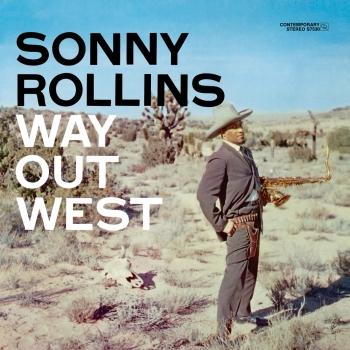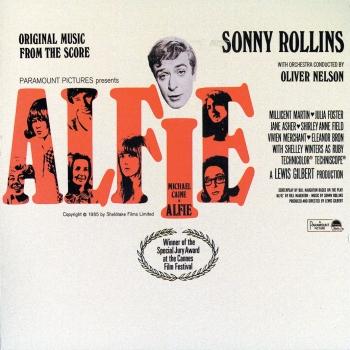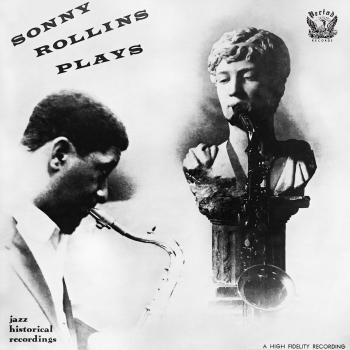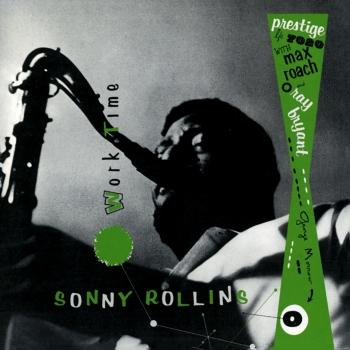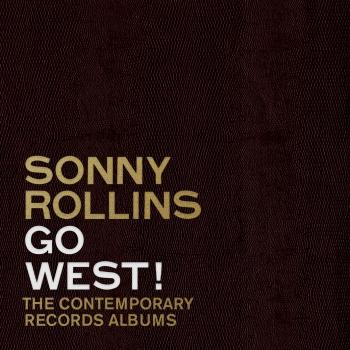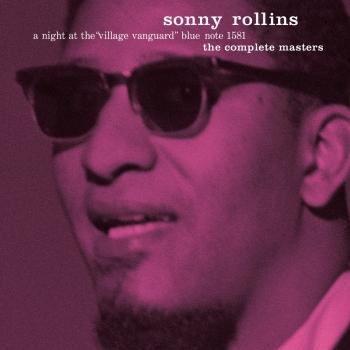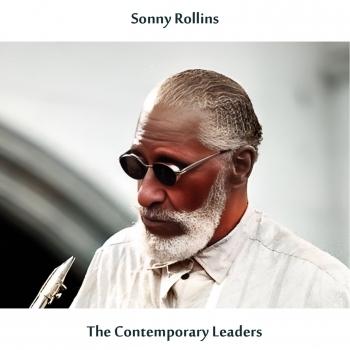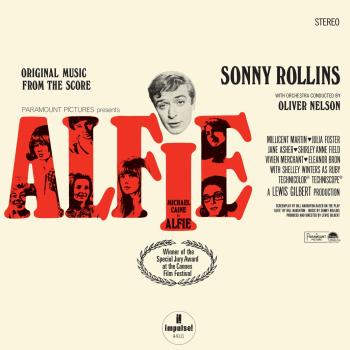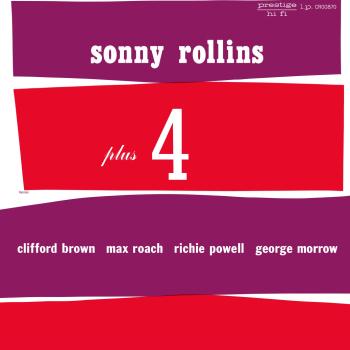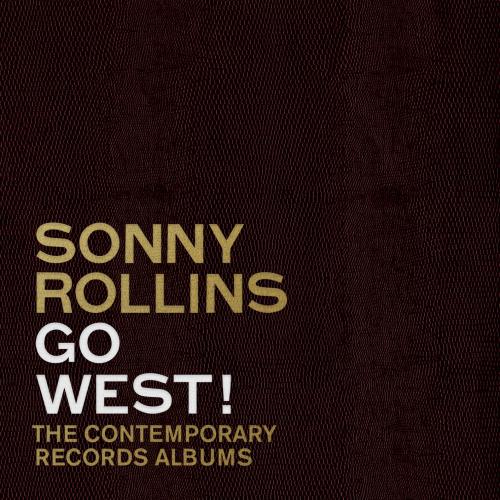
Go West!: The Contemporary Records Albums (Remastered) Sonny Rollins
Album info
Album-Release:
2023
HRA-Release:
17.03.2023
Album including Album cover
I`m sorry!
Dear HIGHRESAUDIO Visitor,
due to territorial constraints and also different releases dates in each country you currently can`t purchase this album. We are updating our release dates twice a week. So, please feel free to check from time-to-time, if the album is available for your country.
We suggest, that you bookmark the album and use our Short List function.
Thank you for your understanding and patience.
Yours sincerely, HIGHRESAUDIO
- 1 I’m An Old Cowhand 05:42
- 2 Solitude 07:52
- 3 Come, Gone 07:53
- 4 Wagon Wheels 10:12
- 5 There Is No Greater Love 05:18
- 6 Way Out West 06:29
- 7 I’ve Told Ev’ry Little Star 05:29
- 8 Rock-A-Bye Your Baby With A Dixie Melody 04:56
- 9 How High The Moon 07:47
- 10 You 04:18
- 11 I’ve Found A New Baby 03:41
- 12 Alone Together 06:03
- 13 In The Chapel In The Moonlight 06:42
- 14 The Song Is You 05:41
- 15 I’m An Old Cowhand (Alternate Take) 10:11
- 16 Come, Gone (Alternate Take) 10:30
- 17 Way Out West (Alternate Take) 06:40
- 18 The Song Is You (Alternate Take) 06:17
- 19 You (Alternate Take) 04:18
- 20 I’ve Found A New Baby (Alternate Take) 04:21
Info for Go West!: The Contemporary Records Albums (Remastered)
Newly remastered from the original analog tapes by Grammy-winning engineer (and former Contemporary Records studio employee) Bernie Grundman, the 20-track set presents two classic albums from the legendary saxophonist’s catalog: Way Out West (recorded in March 1957) and Sonny Rollins and the Contemporary Leaders (October 1958). Adding additional context are six alternate takes, culled from both albums. Originally released in 1986 on the long-out-of-print compilation album Contemporary Alternate Takes, these tracks allow listeners to hear Rollins and his fellow musicians develop such iconic recordings as “Way Out West” and “Come, Gone.”
Go West!: The Contemporary Records Albums is part of an ongoing collection of special releases celebrating the 70th anniversary of Contemporary Records.
In the spring of 1957, 26-year-old Sonny Rollins was primed for a new adventure. For nearly a decade, the tenor saxophonist had worked his way up through the ranks of the New York City jazz scene. By the mid-50s, Rollins was playing alongside such stars as Miles Davis, Clifford Brown and Max Roach, and Thelonious Monk, and had released his first albums as a leader on Prestige Records. The saxophonist had also established himself as a talented composer, through such now-iconic jazz standards as “Oleo,” “Airegin,” “Doxy” and “St. Thomas.”
But while the Harlem-born artist was firmly entrenched in the East Coast hard bop scene, the opportunity to explore the sights and sounds of the West Coast (where the cool jazz movement was in full swing) had a strong appeal. Moreover, having recently concluded his contractual obligations with Prestige, Rollins was a free agent. In his new liner notes, Ashley Kahn writes, “The idea of freedom comes up often in chronicles of Rollins during this period. It’s noted in the music he was creating—particularly in his decision to perform and record with piano-less rhythm accompaniment, allowing for a harmonic freedom, but also in his extended improvisations that developed into lengthy stories of their own. Rollins was developing his sound and approach on a daily basis.”
At the center of the West Coast jazz scene was Contemporary Records. Founded in 1951 by former screenwriter and film producer Lester Koenig, the young label was home to some of Los Angeles’ most exciting artists, including Shelly Manne, Barney Kessel, Hampton Hawes, Art Pepper and André Previn. From its state-of-the-art recording facilities to its high-impact jacket art, Contemporary Records had quickly established itself as an industry tastemaker—and Rollins wanted to take part in the action. Koenig, who had recently begun pairing East and West Coast musicians together, was just as eager to work with the rising star.
“I think everybody on the scene knew about Contemporary Records. Contemporary had a very positive reputation, a good name,” recalls Rollins, speaking to Kahn in 2021. “[Koenig] seemed to be a very resolute fellow, a no-nonsense type of guy, and a very charming person. . . . He was very respectful and a supporter of the music. He knew the history.”
Rollins commemorated his inaugural trip to California with Way Out West. Recorded in the early hours of March 7 with bassist Ray Brown and drummer Shelly Manne, the album marked the saxophonist’s first in a trio setting. A loose concept record, Way Out West was comprised of originals (“Come Gone” and the title track), standards (Duke Ellington’s “Solitude,” Isham Jones’ “There Is No Greater Love”) and a pair of Western classics: Johnny Mercer’s “I’m an Old Cowhand” and Peter DeRose’s “Wagon Wheels.” Engineer Roy DuNann (whom Rollins refers to as “the Rudy Van Gelder of the West Coast”) recorded the sessions.
The memorable jacket art, photographed by Bill Claxton, was also conceived of by Rollins. The desert scene features the musician as a lone cowboy, drawing a saxophone from his gun holster. “I used to go to the movies every week in Harlem and I happened to be a big cowboy fan,” reveals Rollins. “They were my heroes and they were always the good guys. They stood for justice. In the end, good would always win over bad.”
In 1958, Rollins returned to Los Angeles—but this time he was a star. In the two years following his first visit, the saxophonist had released multiple albums (including the groundbreaking Freedom Suite), made his debut at Carnegie Hall and was hailed by critics as the decade’s most influential tenor sax player. Rollins had also married his first wife, actress and model Dawn Finney, whom he met during his first trip to California. His follow-up for Contemporary, Sonny Rollins and the Contemporary Leaders, would bookend this eventful era—marking the musician’s final album of the ’50s, before he embarked on his first European tour and took a three-year hiatus, ahead of his next artistic phase.
Recorded over three days that October, Sonny Rollins and the Contemporary Leaders found the horn player primarily in a quintet setting, backed by Manne, Barney Kessell (guitar), Hampton Hawes (piano) and Leroy Vinnegar (bass), with a guest appearance by vibraphonist Victor Feldman—all of whom also recorded as leaders on the label, as the title implies. Bridging the sounds of both coasts, the album showcased the talents of each musician, as they played eight standards, including “Alone Together” (Schwartz/Dietz), “You” (Donaldson/Adamson) and “How High the Moon” (Lewis/Hamilton).
“I really like the mix of tunes we did on the Leaders album, and I also like that the record shows there is a difference between the West Coast and East Coast musicians back then,” notes Rollins. “The musicians out there were just like the West Coast itself—beautiful landscape, beautiful weather, everything like that… East Coast jazz was more hard-edged. The bebop music we were playing at that time represented that divide—I could hear the difference.”
Rollins’ love affair with California wasn’t just about the scenery, however. To him, these trips and their resulting albums represented a unique moment in his life—one filled with creative exploration, a thrilling sense of opportunity and romance. “Being out West felt like new beginnings to me,” he explains. “That whole experience in L.A. was a moment of growth. I’m so grateful that I’ve lived to the age that I am and that I could learn. I’m still learning, you know, growing and learning.”
Sonny Rollins
Digitally remastered
Sonny Rollins
will go down in history as not only the single most enduring tenor saxophonist of the bebop and hard bop era, but also the greatest contemporary jazz saxophonist of them all. His fluid and harmonically innovative ideas, effortless manner, and easily identifiable and accessible sound have influenced generations of performers, but have also fueled the notion that mainstream jazz music can be widely enjoyed, recognized, and proliferated. Born Theodore Walter Rollins in New York City on September 7, 1930, he had an older brother who played violin. At age nine he took up piano lessons but discontinued them, took up the alto saxophone in high school, and switched to tenor after high school, doing local engagements. In 1948 he recorded with vocalist Babs Gonzales, then Bud Powell and Fats Navarro, and his first composition, "Audubon," was recorded by J.J. Johnson. Soon thereafter, Rollins made the rounds quickly with groups led by Art Blakey, Tadd Dameron, Chicago drummer Ike Day, and Miles Davis in 1951, followed by his own recordings with Kenny Drew, Kenny Dorham, and Thelonious Monk.
In 1956 Rollins made his biggest move, joining the famous ensemble of Max Roach and Clifford Brown, then formed his own legendary pianoless trio with bassist Wilbur Ware or Donald Bailey and drummer Elvin Jones or Pete La Roca in 1957, doing recorded sessions at the Village Vanguard. Awards came from Down Beat and Playboy magazines, and recordings were done mainly for the Prestige and Riverside labels, but also for Verve, Blue Note, Columbia, and Contemporary Records, all coinciding with the steadily rising star of Rollins. Pivotal albums such as Tenor Madness (with John Coltrane), Saxophone Colossus (with longstanding partner Tommy Flanagan), and Way Out West (with Ray Brown and Shelly Manne), and collaborations with the Modern Jazz Quartet, Clark Terry, and Sonny Clark firmly established Rollins as a bona fide superstar. He also acquired the nickname "Newk" for his facial resemblance to Brooklyn/Los Angeles Dodgers pitcher Don Newcombe.
But between 1959 and 1961 he sought a less superficial, more spiritual path to the rat race society of the times, visiting Japan and India, studying yoga and Zen. He left the music business until 1962, when he returned with the groundbreaking and in many ways revolutionary recording The Bridge with guitarist Jim Hall for the RCA Victor/Bluebird label. Rollins struck up a working relationship with trumpeter Don Cherry; did a handful of innovative LPs for the RCA Victor, MGM/Metro Jazz, and Impulse! labels; did one record with his hero Coleman Hawkins; and left the scene again in 1968. By 1971 he came back with a renewed sense of vigor and pride, and put out a string of successful records for the Milestone label that bridged the gap between the contemporary and fusion jazz of the time, the most memorable being his live date from the 1974 Montreux Jazz Festival, The Cutting Edge. Merging jazz with calypso, light funk, and post-bop, the career of Rollins not only was revived, but thrived from then onward. He was a member of the touring Milestone Jazz Stars in 1978 with McCoy Tyner and Ron Carter, and gained momentum as a touring headliner and festival showstopper.
His finest Milestone recordings of the second half of his career include Easy Living, Don't Stop the Carnival, G-Man, Old Flames, Plus Three, Global Warming, This Is What I Do, and Without a Song: The 9/11 Concert. He has worked extensively with road and recording bands that have included such artists as electric bass guitarist Bob Cranshaw; trombonist Clifton Anderson; pianists Tommy Flanagan and Stephen Scott; keyboardist Mark Soskin; guitarists Bobby Broom and Jerome Harris; percussionist Kimati Dinizulu; and drummers Jack DeJohnette, Perry Wilson, Steve Jordan, and Al Foster. Rollins formed his own record label, Doxy, through which he issued the CD Sonny, Please in 2006. Well into his eighth decade of life, Rollins continued to perform worldwide. As a composer, he will always be known for three memorable melodies that have become standards and well-recognized tunes in the jazz canon -- "Oleo," "Airegin," and especially "St. Thomas." (Michael G. Nastos). Source: Blue Note Records.
This album contains no booklet.











